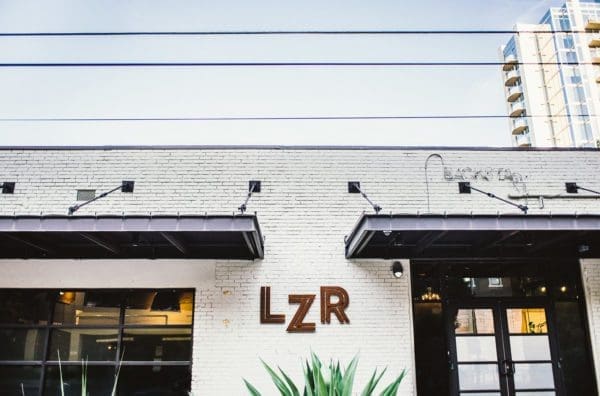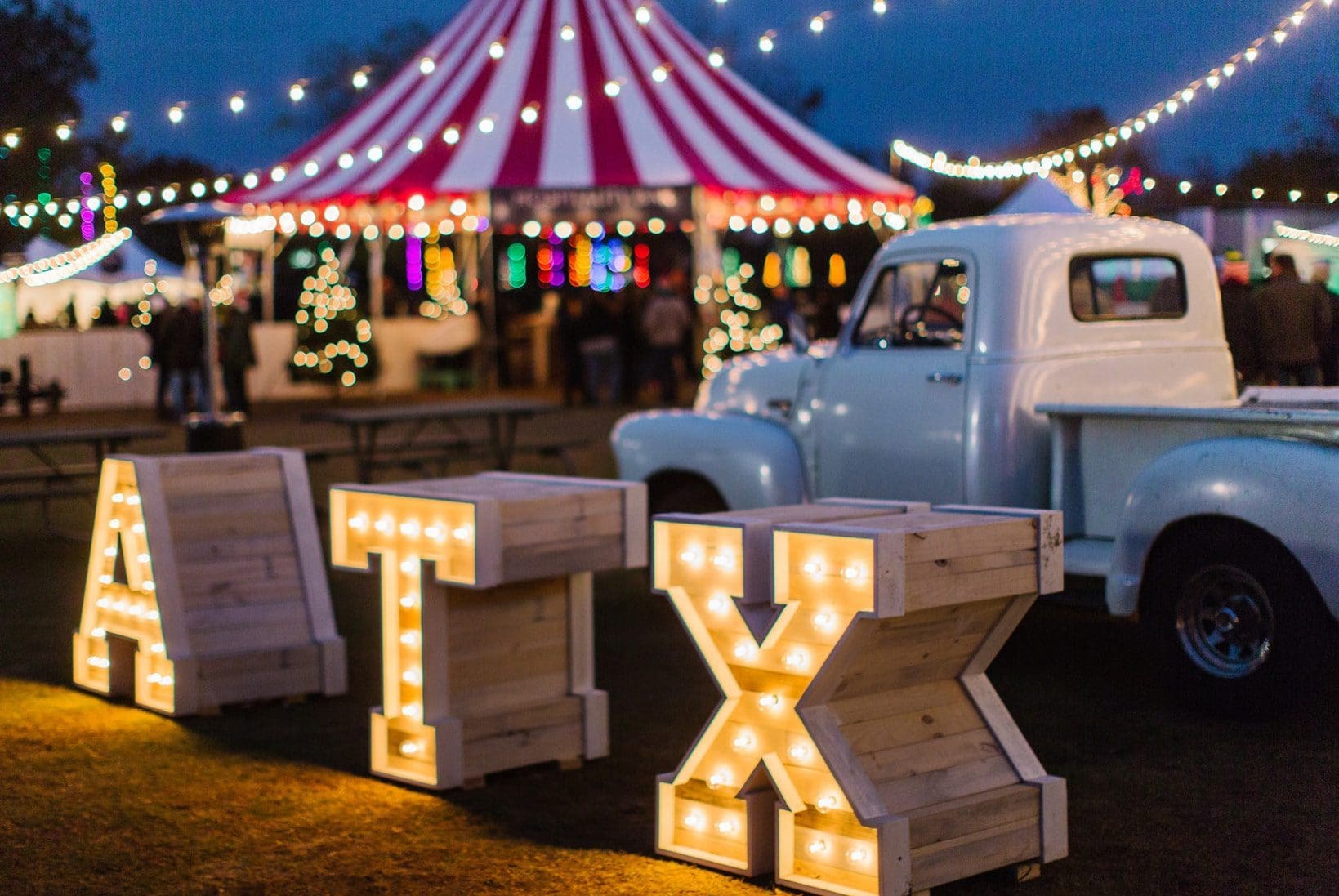Old Becomes New

Austin’s Creative Scene, Redefined
Words by Savannah Whitmer Photos courtesy Treble Public Relations
Some event venues become almost as legendary as the musicians who perform there. These are the landmarks of art and culture in the live music capital of the world.
La Zona Rosa
La Zona Rosa was the quintessential venue in Austin for years. This space was never just a part of the arts and entertainment scene in Austin—La Zona Rosa defined it. But after LZR closed in 2013 with a final performance by Prince for SXSW, a part of the city died with it.
That’s why the historic downtown venue is reopening its doors to performances and private parties thanks to a rebranding project headed by Vast, a tech company currently housed in LZR’s mixed–use workspace. La Zona Rosa—renamed LZR—will continue to rent out office space, but will also have 10,000 rentable square feet of event space with a bar area, lounge, outdoor patio, and warehouse for concerts.
LZR has hosted a slew of stars over the years, both local and legendary. A new mural outside the venue features past performers Norah Jones, Sam Beam, Ben Harper, Willie Nelson, Pete Townshend, Gary Clark Jr., and Lucinda Williams.
Emo’s
The Emo’s nightclub that thrived downtown from 1992 to 2011 had an undeniably gritty charm. Despite faulty plumbing, stickered walls, and tightly-packed outdoor shows at the height of Texas summers, Emo’s was a community staple. The space that was built in 1870 as a stable and carriage house became what locals knew as an authentic Austin experience in the 90s.
But it was clear in 2011 that Emo’s had outgrown itself. Other downtown venues began to outpace Emo’s with larger capacities and more amenities for bands and concertgoers.
The closing was bittersweet. The historic location of this popular local venue was left behind, counted as a casualty of the city’s booming music scene. But that same year, Emo’s introduced its East Riverside location. Millions were poured into the venture, and its relocation has paid off, as their nightly shows feature various of-the-moment performers.
Unlike its closed downtown sister venue, Emo’s new location can accommodate up to 1,700 concert-goers, who enjoy the ample space and better lines of sight with 12–foot ceilings. Despite the new and improved large facility, Emo’s retains its intimate, uniquely–Austin vibe that has defined the city’s music scene since 1992.
Stubb’s
In the mid-1980s, Texas pitmaster C.B. Stubblefield, known simply as Stubb, introduced Austin to his legendary barbecue. Since then, Stubb’s barbecue has been the subject of local–love and national acclaim. The culinary genius even prompted the creation of two companies named Stubb’s, one the famous restaurant and live music venue and the other the BBQ sauce brand now owned by McCormick & Co. But when the Red River Street restaurant began featuring its food in bars across the city, a two year legal–battle ensued between the two Stubb’s companies over the exclusive right to the Stubb’s name.
In the settlement reached this July, the companies resolved that the Austin restaurant will phase out its use of the Stubb’s name while the McCormick & Co. sauce brand will continue to use it. The restaurant may rebrand under the name Liberty Lunch, a title referring to the iconic live–music venue in Austin that closed in 1999. Liberty Lunch hosted legendary performers at the height of the 70’s and 80’s, including stars like Stevie Ray Vaughn, Joan Jett and the Blackhearts, Nirvana, Dolly Parton, The Foo Fighters, and Iggy Pop, to name just a few.
Despite the rebranding, the Stubb’s restaurant Austinites know and love will continue to play live music, operate under the same ownership, and serve the same cold drinks and famous smoked meats.
Pine Street Station
When the owner of Pine Street Station was ordered to vacate her home, creative space, and public event venue in 2014, she wasn’t going to back down without a fight. Reji Thomas had lived and worked out of Pine Street Station (originally Graphic Glass Studios) since 1979, and before that, the dilapidated, beloved warehouse had been used as a railroad station, perhaps as long ago as the 1920s.
From 1979 to 2014, the building was the major creative hub of the Eastside and as multifaceted, colorful, and vibrant as Thomas’ own famous glassworks. Pine Street Station hosted art collectives and farmer’s markets, musicians like Kanye West and Amy Winehouse, literary events and SXSW parties, and was even one of the original stops on the East Austin Studio Tour.
So when Capital Metro announced its intention to repurpose the land that Pine Street Station sat on for a new development, Thomas and other local supporters made heartfelt pleas in an effort to appeal the eviction. Despite their petitions, the Pine Street Station land was turned over to Capital Metro in 2014.
Today, however, Pine Street Station can be seen at Springdale Station. A portion of the building was moved from Waller and 5th Streets to the site of another of Austin’s historic railroad stations, where it can be used once again as a creative space and event venue. Though still under construction, Pine Street Station will be open and operating as a historic and cultural space in 2018.










